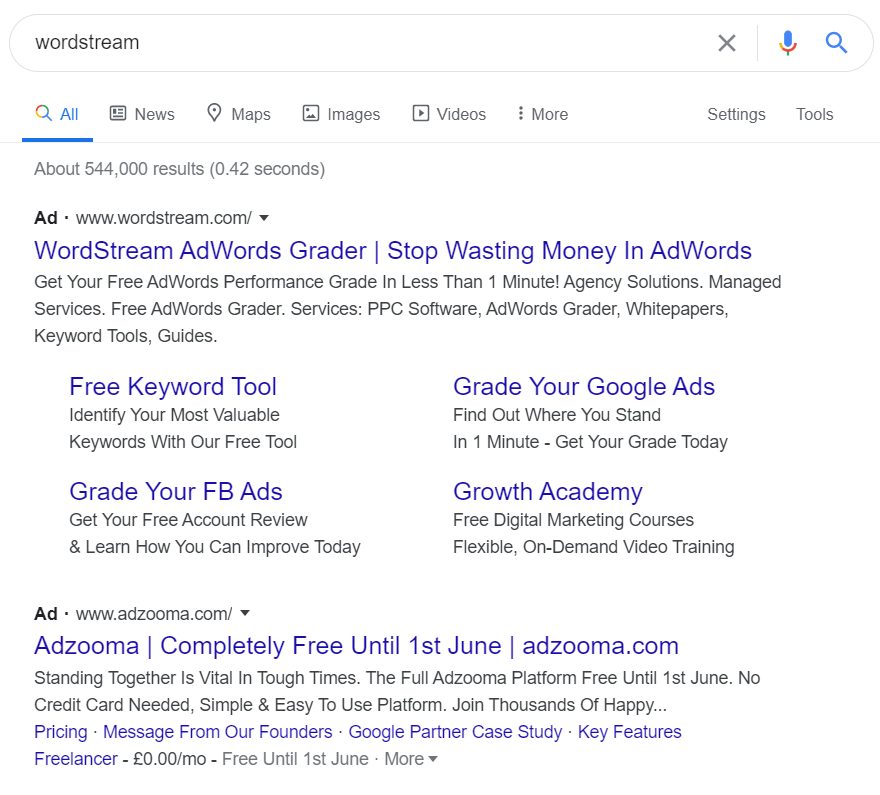You’ve climbed the impossible mountain and started a business. And yet, as you turn the corner, you realise that what comes next is an even bigger beast: finding customers.
I’m going to run through the best ways to generate leads if you’re a startup. These are practices that will get easier as you execute them, and you’ll be able to tailor them to your individual needs as you go. Then we’ll hear from Christopher Lier, Chief Marketing Officer at LeadGen App, for some tips about implementing lead gen into your business.
The 3 main elements of lead generation
- Lead capture
Lead capture is what is says on the tin: a way of capturing your leads. Leads are defined as people who have the potential to become your customers. Lead capture is the hook on the end of your fishing line – you need it in order to reel them in.
Lead capture is most commonly found in the form of an email capture on a website. This can be in a newsletter sign up box, contact form or pop up.
- Lead magnet
You can think of a lead magnet as like an exchange: you give a potential lead something, for free, such as an eBook, webinar, tool, or trial and they give you a way to contact them, typically an email address.
Lead magnets are a great way of enticing new leads as well as proving your value. Not only do you get their information, but you are more likely to stick in their minds because they’ve engaged with your content.
- Lead scoring
You can attribute lead scores to each potential customer based on their level of interaction with your brand. This can be done in any piece of software that provides lead management. These scores help you sort leads into high and low-quality categories, meaning if you only have a limited amount of resources, you can prioritise those who are more likely to be receptive to your marketing.
For instance, you can score someone as higher quality if they’ve watched your full-length video and stuck around, over those who have simply read your email. If you get to the stage where you need to filter your leads, I’d say you’re doing a pretty great job at lead gen by this point.
What does a lead generation strategy need?
To get its priorities straight, first and foremost.
You won’t be able to generate good, high-quality leads without giving people value. The way to give people value is through your content. Whether this a blog post about your product, a free sample or trial, an explainer video, or something else entirely, it’s important that your energy is focused on what you’re providing your customers rather than the customers themselves.
Your target shouldn’t be lead generation, it should be providing a strong, seamless customer experience which in turn will generate leads. Better yet, by providing value, your leads will be of a higher calibre: if they’ve digested the content you’ve published and they’re sticking around, you know they’re likely to be interested.
There’s no point in generating hundreds of leads if only a few of them convert. You’ll waste time and resources chasing them, to get little in return.
A few extra points before we dive in: I’d like to highlight the importance of displaying your contact details loudly and proudly. There’s nothing worse than wanting to get in touch with a business and having to spend ages looking for the right details. So, spend some time identifying your customer personas. Whilst I know as a new business you’re striving for customers in any form, knowing who exactly your audience is will make all the difference.
1. Write kickass ads
There are too many merits of online advertising to ignore: getting yourself listed on the SERPs is imperative if you want to win customers. As a new business, you’re probably sceptical as to how well you can rank on search engines such as Google. If your industry is particularly saturated, and you don’t have a huge budget, it can be easy to waste your advertising spend in the blink of an eye.
As a startup, you have to be smart – smart, and highly targeted. By doing the basics well, you’ll put yourself ahead of a lot of people using Google Ads. Spend some time studying up on what makes a kickass ad and you’ll be raking in those clicks before you know it.
Similarly, there are many benefits to advertising on Facebook as it’s a great place to find leads – it offers an entirely different audience. If your potential customers are social media users, and you know their interests, you can really narrow down who you target on this platform. Facebook also offers ways of embedding lead capture forms into an ad, so that the user journey isn’t disrupted and you have less chance of losing them.

2. Build the perfect landing page
If the term for a potential customer is a lead, then we’ll name potential leads as fawns. Stick with me.
The reason why I’m calling them fawns is because they’re delicate, scare easily and are on wobbly legs when it comes to your business – one wrong move could send them running for the hills. They have no trust or loyalty with your brand, so they can easily press that dreaded back button and choose another business.
That’s why if you get your fawn to click your ad, you need to tread very carefully. The way to do this is to build a dedicated landing page for their expectations and gently guide them to the lead capture form (or whatever your goal is.)
If your PPC ad promotes an offer or specific product, taking them through to your main website is just going to confuse them. If they have to hunt for what they were expecting to see, you’ll lose them. By taking them directly to a separate page, designed with their particular journey in mind, you can guide them straight to their destination. This handholding technique is needed far more than you may think and will result in many more leads.
Need help with your landing pages?
There are also many free and cost-effective resources online that can help you create a successful landing page. Even better, some can be used together to drive excellent results and automate your workload.
Here are some of our favourites:
3. Decide what your hook is
As we discussed previously, a lead magnet is designed to entice people in. There are many ways of offering something to your audience, but it’s all about deciding what the right one for your specific user base is.
Better yet, think of it the other way around: what is the most valuable thing that you’re prepared to offer people for free? Is it your knowledge? Then create an eBook, a series of blog posts, a guide. If it’s a tiny piece of your product, promote a free trial, sample, taster. Maybe it’s an offer, a coupon, an introductory discount. Whatever you choose, the next stage is more important – how you package it.

You can decide to give away the best thing in the world, but if people don’t recognise its value then it’s meaningless. Use your content to frame your lead magnet in the right way: educate your audience if they don’t know why they need what you’re selling, shout about the benefits. As a start-up, you have to tackle many things at once – establishing brand awareness and trust goes hand-in-hand with lead generation. Picking a lead magnet which quickly demonstrates the value of your brand over others is a good way to win.
The goal is that for whatever you offer, you get a lead in return. But you need to choose which form is going to be most valuable to you. Do you want people to opt-in for an email so you can gain a direct line to their inbox? Would you rather a social media follow because that’s where you promote your business the most? Is an on-page form expected because of the details you’d need to know?
There’s no strategy that wins all as every business is unique. You don’t need to adopt multiple different lead magnets, pick one and give it your all. There’s no need to get stuck for lead magnet ideas as there’s plenty of examples out there.
4. Remarketing
Just because you don’t capture a lead the first time around, doesn’t mean you won’t the next time. If you’ve invested in online advertising, then remarketing is the next step to warming up potential customers.
Remarketing tactics allow you to generate brand awareness, nurture the leads you already have and, most importantly, capture those who passed you by the first time. With only 2% of shoppers converting on their initial visit, remarketing offers a way of getting back some of that 98% – without it, they’re lost.
Remarketing also offers you many strings in its bow: engaging with customers at various stages of your sales funnel. So once past the lead generation stage, you can utilise it for reengaging with customers who have previously bought from you, for example.
For now, our concentration is on generating those initial leads. Create your remarketing list based on those who have interacted with your brand. This can include those who have previously clicked on an ad but headed back, those who have partially filled out contact details but then left, or those who have read your content but gone no further. There are many tools out there that can help you identify where people have dropped off in your sales funnel, which you can then use to patch the holes in your user journey.
5. Referrals
A shortcut to getting more customers is to introduce a referral scheme. After all, who is most likely to know people who would like your product or service? Other customers!
Here at Adzooma, our refer a friend scheme gives both you and your mate a £20 Amazon voucher whenever you recommend a new user. We’ve found this works really well as the new customers are within the industry field and more likely to stay, whilst the draw of the voucher works universally since Amazon stocks something for everyone.
A little sweetener can push those who already enjoy your services into mentioning them to someone else. Word of mouth advertising is still a strong force to be reckoned with, so referrals can be a strong lead generation source.
6. Content marketing
Content production should never be overlooked. It’s the backbone of your business as you can have the best product or service in the world, but if it’s not marketed properly, you’ll have no customers.
Lead generation through content marketing is fruitful because they come from a qualified source. If they’ve engaged with your content and are still around, you’re likely a good match for each other. Setting up a blog, a Facebook page, social media channels and the like are great communication lines between you and your audience. But they’re going to be pretty dull if they just contain your contact details and nothing more.
Producing well-thought-out content that informs and advise people is valuable. Even if after watching your video, reading your article, participating in your webinar or whatever form your content takes, they leave, you’ve spent all that time in their minds. So the next time they need a service like yours, they think of you. Better yet, they think of how helpful you were, so you must know your stuff. They also think of how you weren’t just trying to sell them something, you cared about them as a person. Again, this is valuable. Through content marketing, you can not only build up leads but craft a loyal customer base who have a reason to come back for more.
At the end of your content – and throughout – be sure to have clear CTAs (call to actions) so that your audience know exactly what they’re supposed to do next if they’re interested. Don’t oversell, it comes across as disingenuous. The brands that survive the long haul, even global pandemics, are those who are more than just money-making schemes. Show your potential customers you care, and they’re more likely to care about you.
If you need a hand with your content marketing, check out FatJoe and StoryChief who offer content and blog writing services.
A solid lead-gen strategy for growth
When you’ve just started a business, you expect to make mistakes and learn from them. Your lead generation strategy should be no different. You’re not going to get it right straight away, and that’s fine. What you should have your eyes on is the long-term: you need a plan that is going to bring in leads for the foreseeable future, not just this week. Everything you do should be built out with care, even if that means it takes a little longer.
The key places to start generating leads is your ads and landing page. Ensure that your pages have easy-to-use, clear lead captures on them. Use your content to promote your lead magnet, and remember that quality over quantity always wins.
Scale your leads on LinkedIn, book more sales meetings and predictable drive revenue with Cleverly. Cleverly uses data from send proven, personalized messages to your potential clients on LinkedIn.
A Q&A with Christopher Lier, Chief Marketing Officer at LeadGen App

What do you think the biggest challenge is when it comes to generating leads?
Speaking about inbound lead generation, the biggest challenge is to cut through the noise. The offer towards your audience needs to be irresistible. Today, simple tactics like getting users subscribed to an email newsletter or offering ebooks hardly work, unless they are backed with extreme value.
The quality of available content online has continuously become better. Your lead offer should provide extreme value upfront for free.
Also, it’s key to have a clear positioning. Your chances to capture leads via highly specific content where you automatically cut out a lot of the noise. For example, as an SEO marketer you could position yourself as a “SEO expert for chiropractors”. Your lead offer will then be directly targeted towards this audience only and chiropractors will be interested and appreciate your content.
Also, when making an offer in exchange for capturing leads, it’s important to paint a clear picture about solving pain points, e.g. visually presenting the before and after. Remove any jargon and think in simple terms what the key pain point of your audience is. Just providing ideas on features and benefits of your solutions isn’t enough. Go deep into understanding and resolving your lead’s frustrations.
In summary, the challenge is accepting the fact that you need to put upfront work into your lead generation strategy and produce meaningful content. That will give you the edge to stand out in your marketplace.
Do you think its harder for some industries than others?
Yes, absolutely. Some industries are quite saturated. The digital marketing industry has a ton of vendors and new ones are starting out every day, especially in PPC advertising.
Additionally, there are a lot of influencers in marketing that are consistently putting out content and that have built a loyal follower base.
Standing out next to those “big” players, is a real challenge, because potential leads will always think: “Why should I work with this new local marketing agency” where I could simply find the best expert in this field that has already proven they are the best?”
It’s still possible to generate leads. Targeting a niche is one way to eliminate some of this competition and grow from there.
Also, brand loyalty and great customer service becomes more and more important. When people get the impression that you care about them, e.g. by providing great value in lead magnets, from the first moment onwards, you can also win in competitive industries.
Should you pay for leads?
There are different ways to pay for leads. Some are great, others not so good in my view.
For example, you indirectly “pay” for leads when running online ads, and it’s a great way to grow awareness and leads.
Another way to pay for leads is via lead scraping or searching the web for cold contacts. That’s still a very good tactic to target your audience with cold email campaigns. In fact, it can be one of the most effective tactics actually.
And then there is a way of paying for specific contact details directly, e.g to access emails, telephone numbers of a lead list. I haven’t really seen this tactic working.
It’s just tempting to get access to contacts, but ultimately I believe it’s just a shortcut and not sustainable. I would always prefer building genuine relationships, using both inbound and outbound marketing, where you “earn” the business rather than buying it.
Do you have any lead management tools you’d recommend to startups?
Sure. For lead capture and lead management for websites and landing pages, that’s exactly what we focus on in LeadGen App. It’s a web app to build multi-step lead forms without writing any code. We designed it for marketers who want to maximize lead generation via their website, blog and landing page campaigns. It’s easy to build beautiful forms and user journeys that can replace boring web forms + create new lead generation opportunities. As an example, we have a B2B company that generates hundreds of leads every month just from offering valuable content resources via forms on their blog posts.
Also, I can recommend FindThatLead for finding contact details of websites for cold prospecting, Lemlist for sending out email campaigns marketing and Funnelytics for building sales funnel strategies.
Do you think an on-page form is the most effective way to capture leads?
It’s definitely the best tactic on websites and landing pages. Think about it: what tactics are available to “monetise” web content in terms of lead generation?
You can either use online forms, chat windows and email & phone inquiries.
Chat windows and chatbots often make things more complicated than they have to be. There is no need to use a chat for sign-ups of a defined lead offer.
The reason forms are so effective is because they make it easy for users to get access to an offer or to get in touch with you as a business. When having a clear offer, for example, a “Webinar sign-up”, a form helps to clearly structure the offer and make it easy for users to sign-up.




